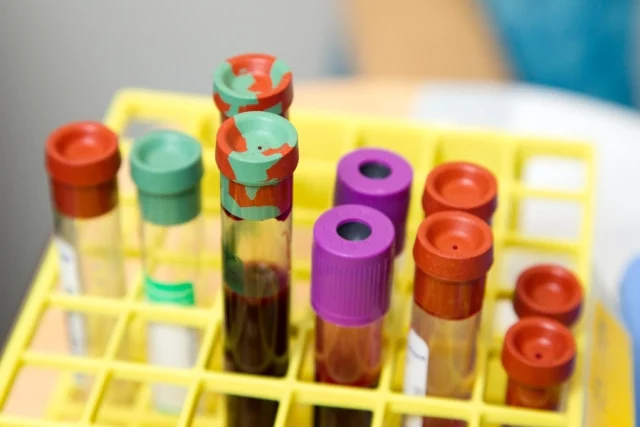Cord blood banking is collecting and keeping umbilical cord blood after birth. It contains important stem cells that can be used to cure serious illnesses.
Parents can donate to either public or private cord blood banks, and their doctor can advise them on whether banking is the best option for their family.
Here we shall look into the two different processes of stem cell banking: the benefits and which one you should opt for.
Benefits Of Stem Cells For The Future Of Your Child
Stem cell preservation is essential for medical applications as it enables the safe and accurate testing of cells and their movement from one location to another.
Cord blood has more stem cells than bone marrow; umbilical lead blood stem cells are used to treat 80 serious illnesses and disorders.
Stem cell banking can quickly find a perfect match, and embryonic stem cells taken from one newborn can treat another baby or adult.
Stem cells (SCs) can regenerate healthy new tissues and cells and are the subject of burgeoning research.
Here are some of the major problems that can be treated with the use of stem cells:
Organ regeneration
Stem cells hold great promise as a tool in regenerative medicine. Organs can be manufactured, donated, and transplanted to match the demand for organs needed.
Tissue engineering and 3D printing have enabled organs to be created in the lab for transplantation.
Stem cell treatment can potentially change the healthcare industry and enhance the lives of many people with life-threatening illnesses, including organ failure.
Type I Diabetes
Diabetes type 1 is a type of diabetes that requires daily insulin injections. It is possible to use preserved stem cells to transplant pancreatic stem cells into people with type 1 diabetes.
However, the supply of retained stem cells is constrained, and there is a risk of rejection.
Despite these difficulties, the medical world is actively researching pancreatic stem cell transplantation as a potential treatment for type 1 diabetes.
Cardiovascular Problems
Researchers at the Massachusetts General Hospital have created new blood vessels from stem cells that are functionally and aesthetically similar to native blood vessels.
This discovery may usher in a new age of regenerative medicine and offer patients with cardiovascular disease a more potent therapy.
Organ transplantation may benefit from the ability to grow organs in the lab from patient stem cells, eliminating the need for immunosuppressive medications and lowering the risk of rejection.
Brain Diseases
Stem cells are a viable treatment option for neurological illnesses, but further study is needed to understand their efficacy and potential hazards.
For example, Parkinson’s disease can be treated with the help of stem cells.
Despite these difficulties, stem cell therapy is still viable for treating neurological conditions like Parkinson’s, but its long-term impact and moral implications remain unknown.
Blood-Related Issues
Hematopoietic stem cells and hematopoietic progenitor cells are abundant in cord blood and placenta (HPCs).
These cells can differentiate into multiple blood cell types and can be used to treat a variety of illnesses.
Precise methods are needed for their collection and preservation to ensure their survival.
Research is ongoing to determine the potential of cord blood and placenta stem cells in treating different illnesses and in regenerative medicine.
Stem Cell Banking – Worth It?
Now that we have discussed the benefits of stem cells, you know how important they can be for your child’s future. Moreover, the ongoing research brings new hope every day and gives more power to stem cell banking.
However, when it comes to the cost of banking stem cells, there are a few things worth considering beforehand:
The Two Types Of Banking
Here are the two options you can have when planning to bank stem cells:
Public Banking
Public cord blood banking promotes community health by gathering and preserving cord blood from healthy pregnancies.
For those with particular ailments, this can be a lifesaver and improves the general health and well-being of the neighborhood.
Those from racial or ethnic minorities should note this as they could find it more difficult to identify a compatible donor.
These people raise their chances of finding a match and saving someone’s life by giving a public bank.
Private Banking
Families can keep their newborn’s cord blood in private banks for themselves and their loved ones.
A rich source of stem cells that can be employed to treat various disorders is cord blood. When a family opts to preserve their lead blood privately, they become the owners of the stem cells and have access to them.
To maintain peace of mind, you must do your homework and pick a trustworthy private bank for cord blood preservation.
The Challenges
Finding high-quality stem cells is the main difficulty with stem cell banking. They must be gathered from healthy, disease-free tissue, carefully processed, and preserved before being available to those in need.
Some patients may not be able to afford private stem cell banks, while public banks might not be able to supply the demand.
Yet, since many illnesses have previously been effectively treated by stem cell banking, it is crucial for advancing stem cell research in the future. It is anticipated to have a big impact on medicine and healthcare in the near future.














